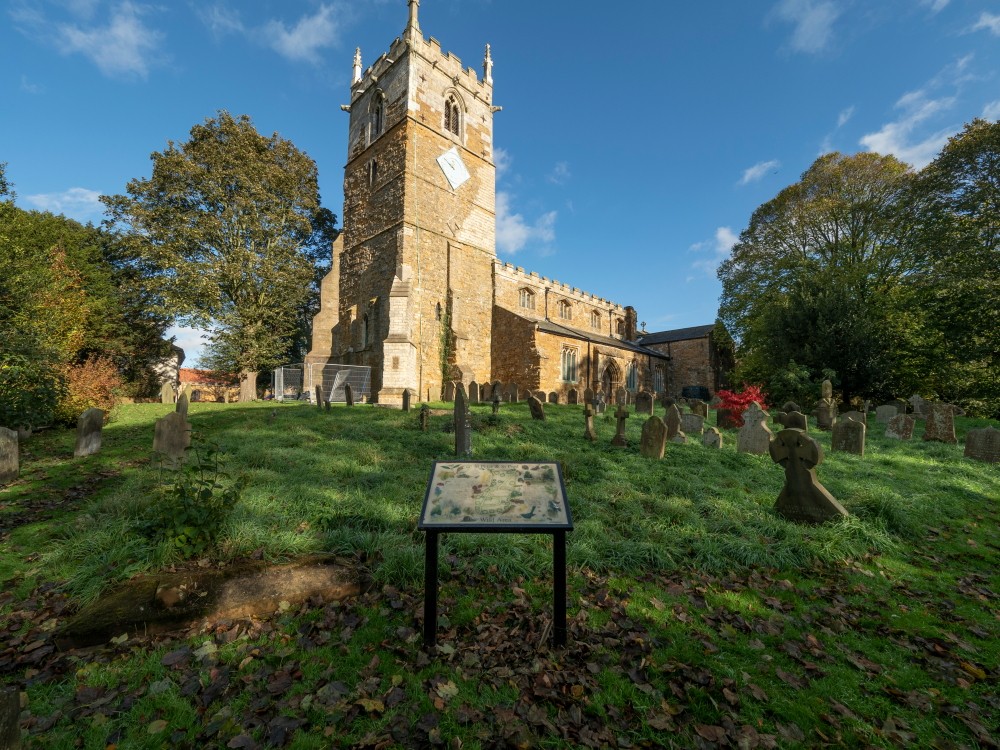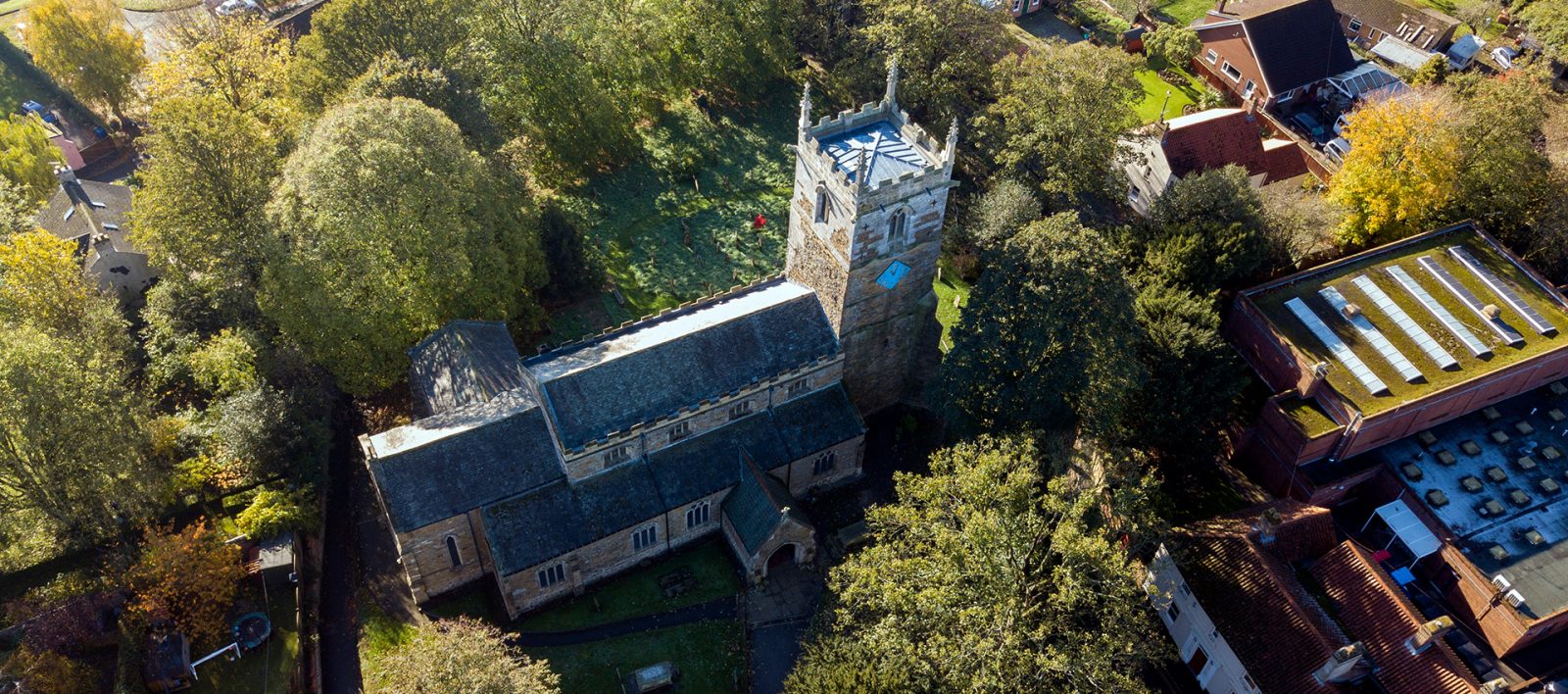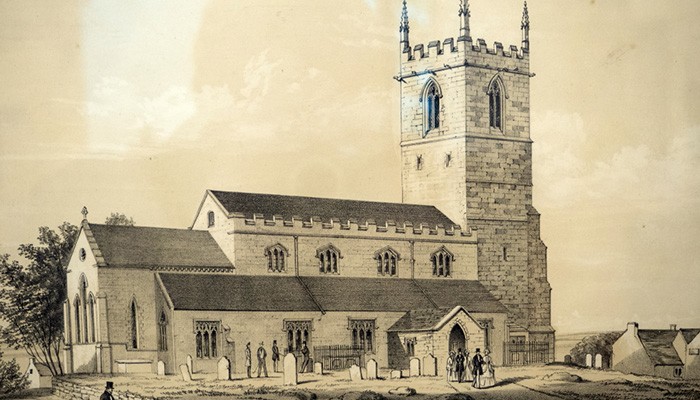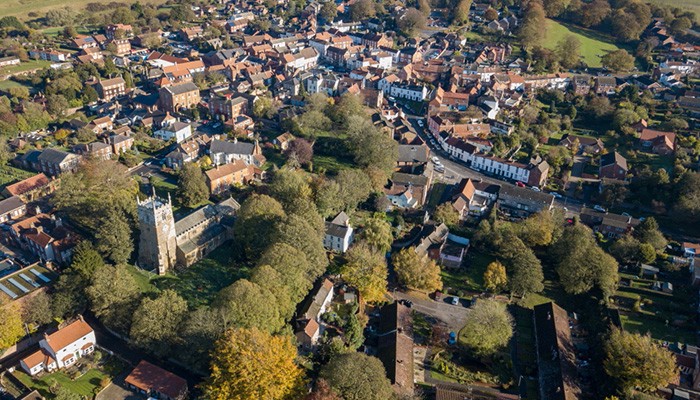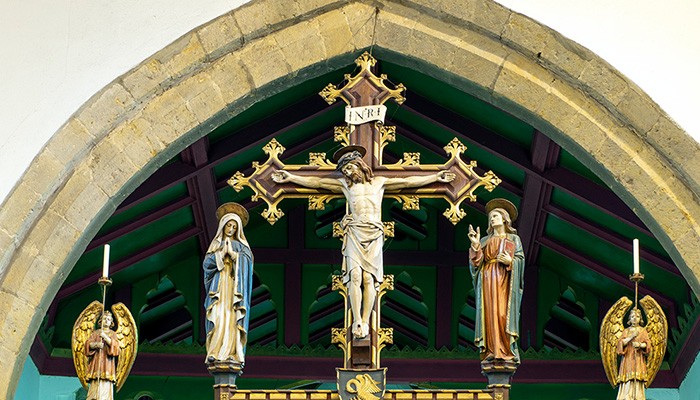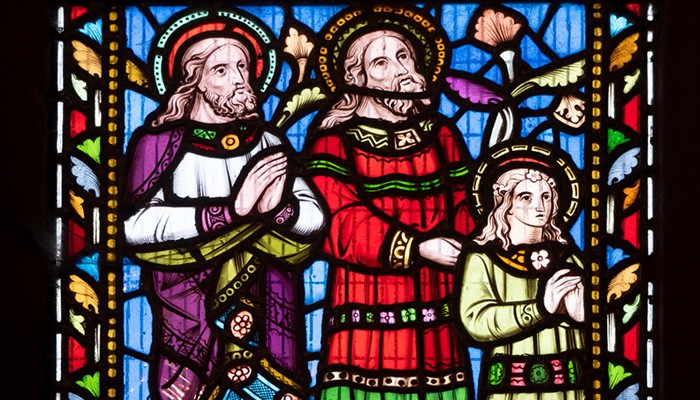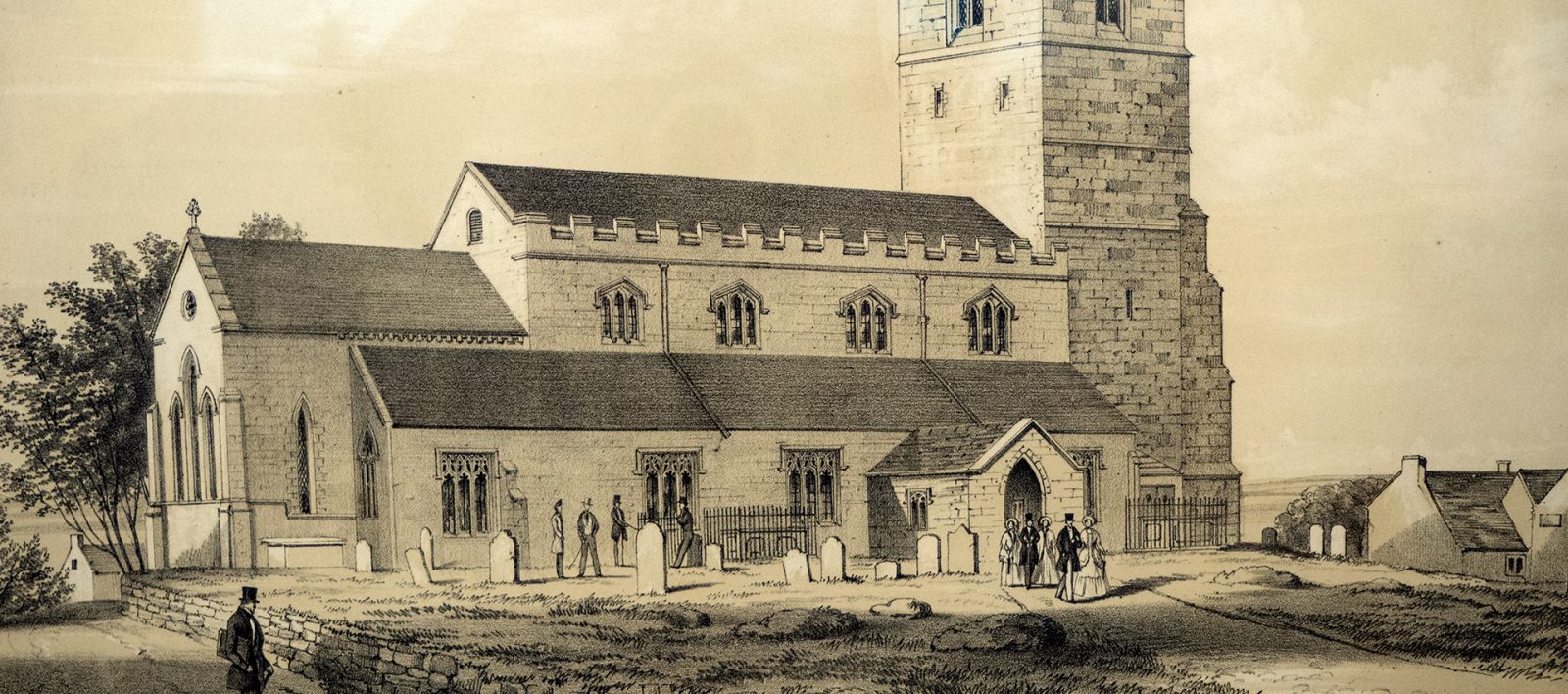
Our History
The History of our Parish Church
This building is not the first church which has stood on this site. It is suggested that Saint Paulinus established a church here in the early part of the seventh century.
Certainly, there has been a place of worship here since Saxon times and the lower part of the tower is perhaps Saxon, dating from around 1050 AD. This may have been the main porch of an aisle-less church.
The tower, as it stands today, displays works of three architectural periods. Its base is early Norman (1066-1189) but with indications of two previous arches which may have been Saxon. Its second stage is Early English (1189-1280) and the top stage with the decorated pinnacles and battlements are Perpendicular style (1377-1547).
Do look at the exterior of the beautiful south door way, with its typical “Dog tooth” ornamentation. This, together with much of the nave, Chancel arch and Chancel all date from the thirteenth century, these being of the Early English style.
In 1806 the lead roof was replaced with one of Westmoreland slate with a lower pitch. The east end (sanctuary) of the church was completely rebuilt in 1848 and in 1863 a major restoration was undertaken by William Butterfield.
Two of the pinnacles were replaced in 1988, one having blown down in a gale in January 1976, damaging the roof as it fell, the other was considered unsafe and removed in 1987.
More restoration of the pinnacles and tower and naves roofs was undertaken in 2018.
The Organ was installed in 1885. In 1982, the organ received a major overhaul and a detached console and a new electronically operated action in place of the old “tracker system” was added.


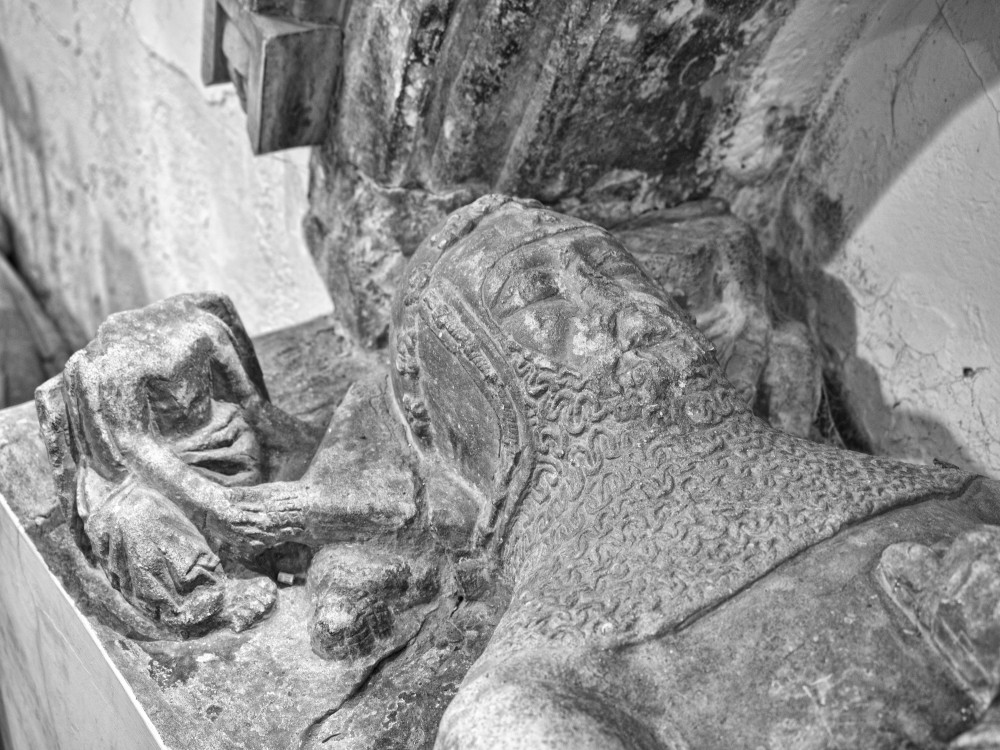
Memorials
In the North aisle, under an arched recess, is the tomb of Sir William de Hundon, a crusader knight of the thirteenth century . This effigy shows him in chain mail with a surcoat and his feet resting on a small dog.
It is possible that Sir William financed the building of the north aisle and endowed a chantry in what is now the Lady Chapel, which was once called the Hundon Quire.
Under a cusped recess in the Lady chapel is the figure of Sir John de Hundon, Sheriff of Lincolnshire in 1343.
On the floor of the chapel is the figure of a lady in a wimple (which dates her to the time of Sir John) with a lion at her feet. She is Philippa, wife of Sir John.
On the wall of the north aisle is a brass in memory of Godfrey Carrington, vicar of Caistor, who died in 1670. He was buried before the High Altar as was his wife who died in the same year.
The Gad Whip
What was it that caused riots in the streets of the small market town of Caistor and led to questions being raised in Parliament about this ‘disgraceful public disorder’?
The answer lies in a glass case. It is the famous Gad Whip, consisting of a stock, six feet in length and a lash of seven feet one inch. The whip has a leather purse attached to the stock which would have contained 30 silver coins, reminiscent of the thirty pieces of silver Judas received for his betrayal of Jesus.One of these, a penny of the reign of Edward I, may be seen near the whip.
Attached to the stock are three pieces of wych elm – although there were supposed to be four of different lengths – perhaps representing the four gospels.
The purpose of the whip was connected to a strange Palm Sunday ritual, when rent was paid for land at Raventhorpe, near Broughton. Every year on this day, the tenant of this land, which belonged to the Lord of the Manor of Hundon, had to provide a whip and send it with a man to Caistor Church. During the reading of the first lesson at Matins, the man cracked the whip three times in the church porch. At the beginning of the reading of the second lesson, the whip was waved three times over the head of the clergyman and held there until the end of the reading when the lash was folded around the stock and the whip deposited in the pew belonging to the Lord of the Manor of Hundon. And all the while the streets were packed with rowdy onlookers – hardly conducive to divine worship!
It is reported in the May 24th 1836 copy of the Hertford Mercury and Reformer that:
“A petition by Sir Culling Eardley-Smith of Bedwell Park, Hertfordshire, was put before the House of Lords Temporal and Spiritual, to get the practice in Caistor stopped on the grounds that it was a superstitious practice… Sir Culling had even applied to the Bishop of Lincoln to get it stopped but he had not done so. Sir Culling wanted the Lords to investigate the Bishop of Lincoln for this scandal.”
Why this ceremony ever began in the first place is a bit vague. The Whip went out of use in 1846 when the land at Broughton changed hands.
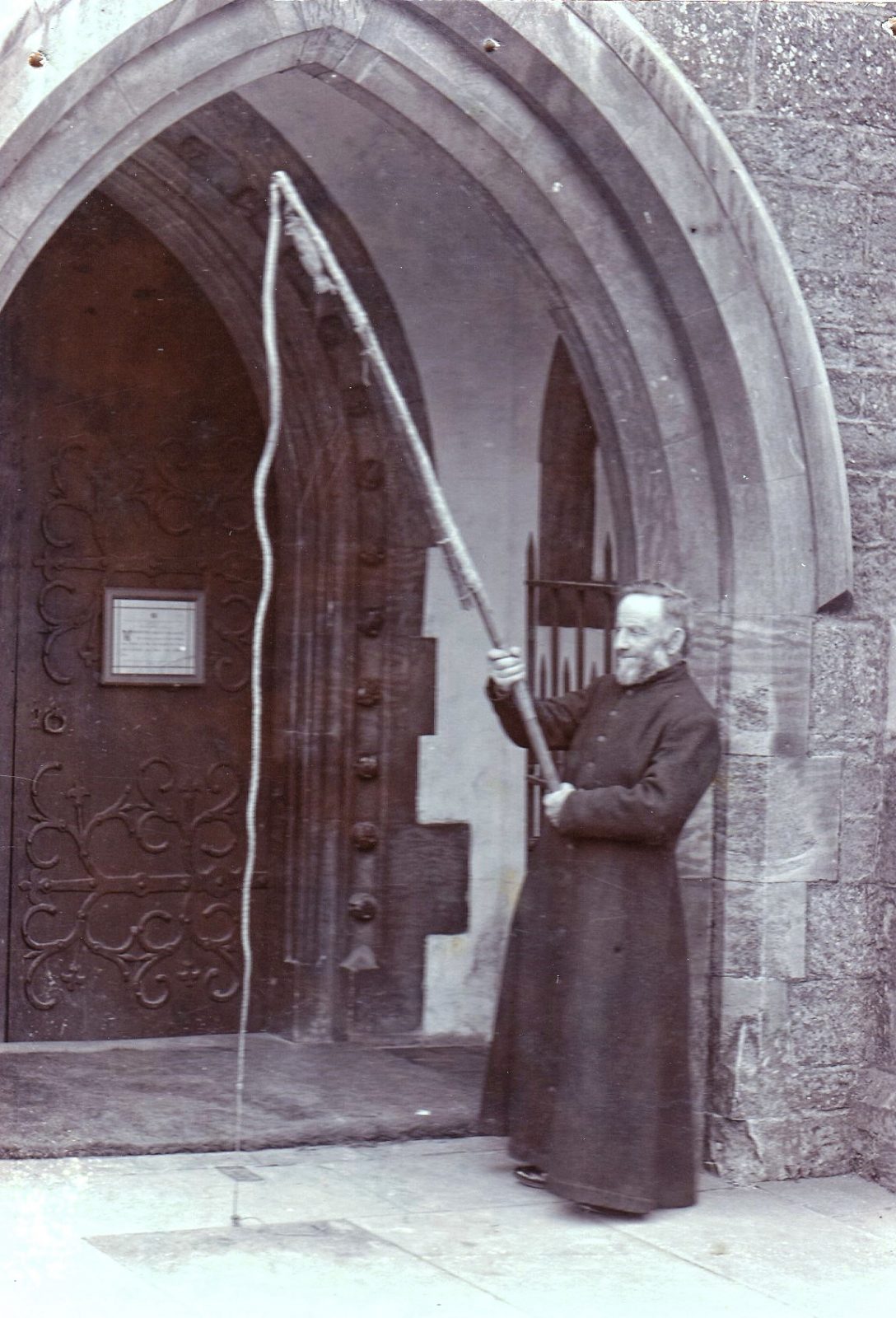
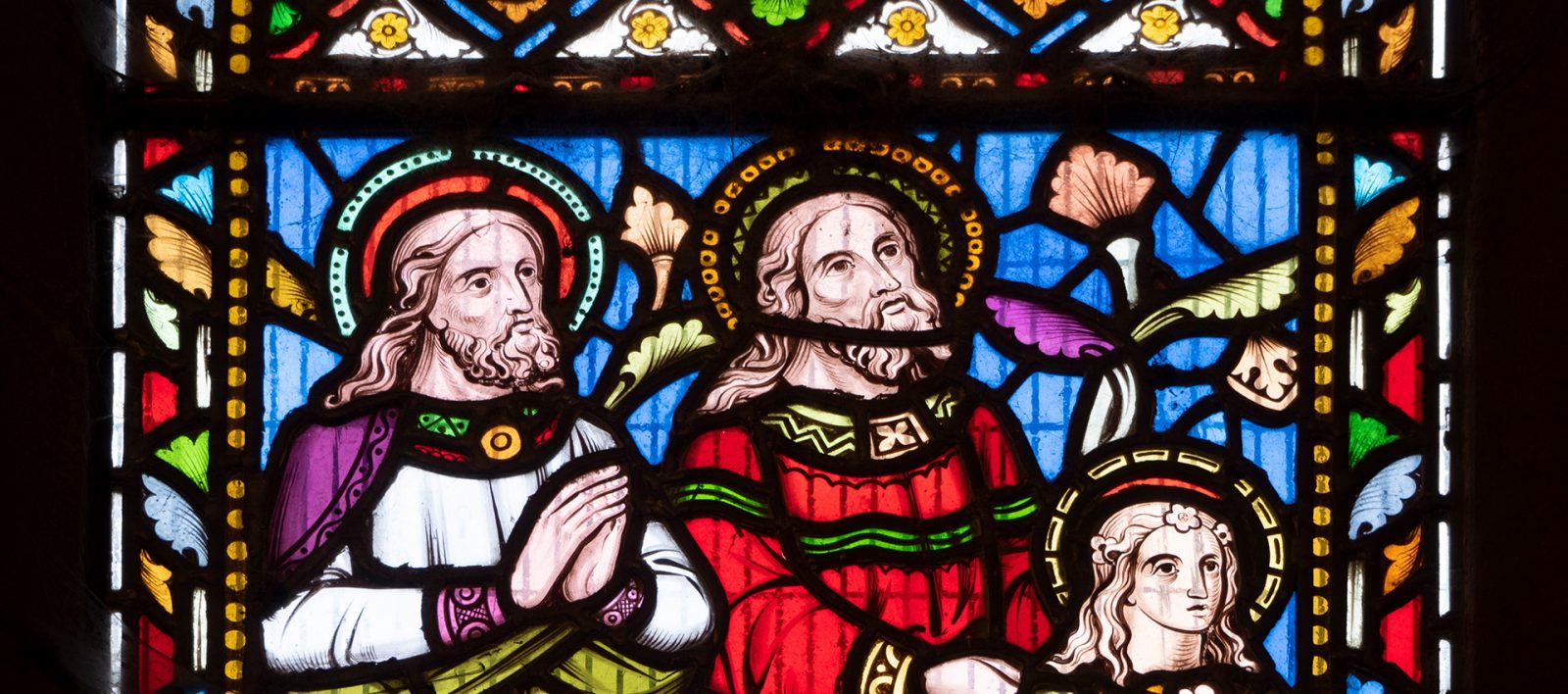
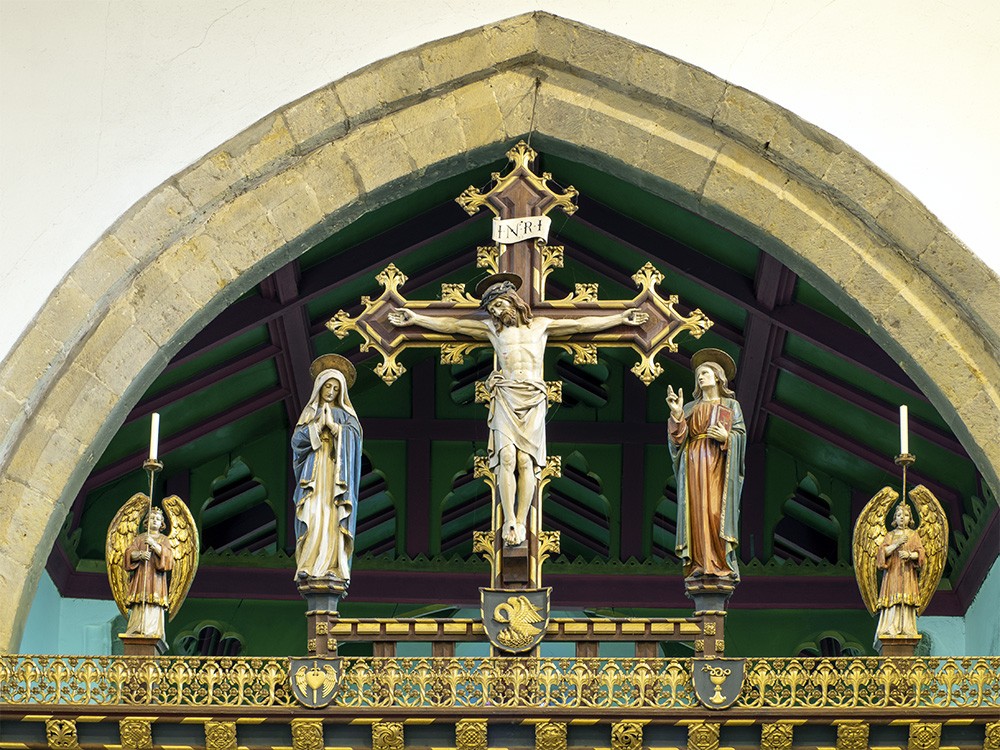
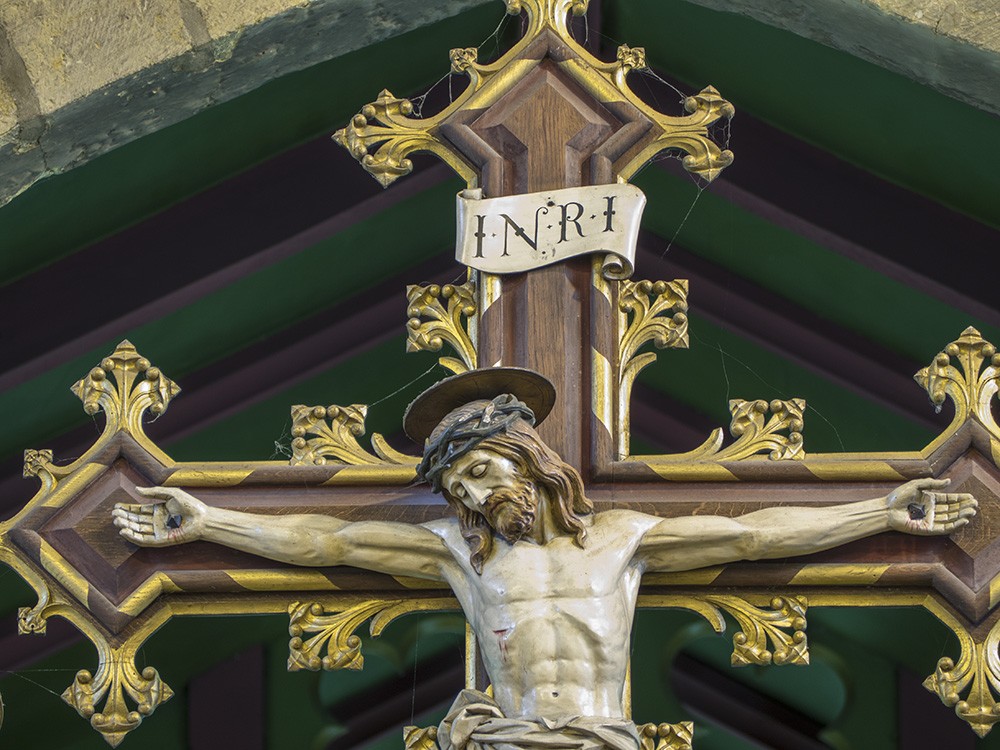
The Rood Beam
As you enter the church, one of the first things to catch your eye is the Rood Beam across the Chancel arch.
The Rood Beam was designed by Wilfrid Bond of Grantham and installed in the 1920’s.
It is full of meaning.
To the left of the cross is the figure of Mary, the mother of Jesus and to the right is the figure of St. John the Evangelist.
This reminds us that in St. John’s Gospel, we are told that these two were standing at the foot of the Cross.
Jesus, as he died, entrusted his mother into St. John’s care. (John 19: 26-27)
Below the Cross is the image of a Pelican pecking at its breast.
This is used in heraldry as a symbol of Christ because the Pelican was thought to feed its young with its own blood to save them from starvation when food was scarce. In the same way, our Saviour shed his blood to save humanity.
At the bottom of the beam are four symbols, from left to right:-
1. The Greek letters X (Chi) and P (Rho) superimposed. These are the first two letters of the Greek word, which gives us the name “Christ”.
2. Below the figure of Mary is a heart pierced with a sword. In heraldry this is called the “Pain of Mary”, the heart being the home of our feelings. It also reminds us how, when Mary and Joseph took the child Jesus to the temple to make the required sacrifices on the birth of a child, the old Man Simeon, predicted that Jesus would be a great man – but a sword would pierce Mary’s soul – an indication that she would suffer because of him. (Luke 2: 22-35)
3. Below the figure of St. John is a chalice with a
snake emerging from it.
This alludes to the legend that St. John, in later years, was challenged to demonstrate the power of his faith by drinking poison. The drink miraculously turned into a snake which jumped out of the cup and thus saved St. John’s life!
4. The Greek letters Alpha and Omega superimposed. These are the first and last letters of the Greek alphabet and are used to refer to God who, in the book of Revelation, is described as the “Alpha and Omega”- the beginning and the end of everything.
Sir Edward Maddison and the Lincolnshire Uprising
In the present vestry, formerly known as the Maddison Quire, is a coloured alabaster effigy of Sir Edward Maddison of Unthank Hall, Durham who died aged 100 in 1553. He was a merchant of Hull and Calais. By the time of his death he was Lord of the Manor of Fonaby, Smithfield on Caistor Moor, Cabourne and Nettleton.
Henry VIII’s wish for a divorce from Catherine of Aragon led to a break with the Church of Rome. The King became the Supreme Head of the English Church and the confiscation of monastic and church property followed.
Commissioners appointed by Thomas Cromwell, Henry’s adviser, including Sir Edward Maddison, arrived in Caistor in October 1536 to begin the assessment.
There was a surge of opposition culminating in the Lincolnshire Uprising. Henry VIII described Lincolnshire as “the most brute and beastly shire of the whole realm”.
Sir Edward was knighted at the coronation of Anne Boleyn.
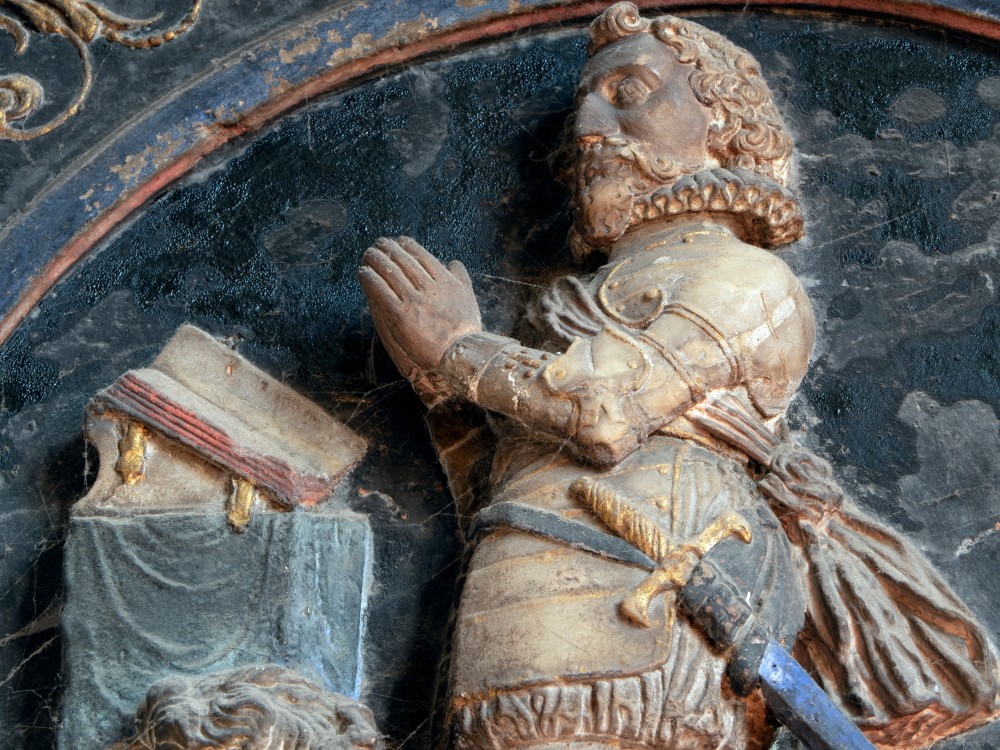
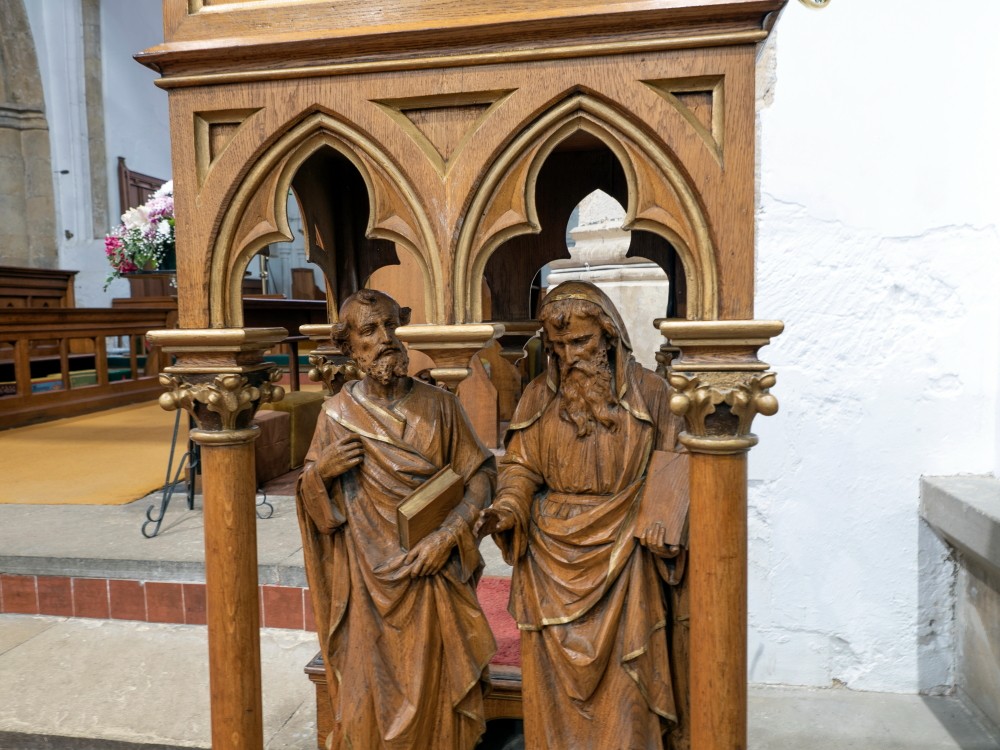
The Westbrookes
A lengthy occupation of the post of Vicar of Caistor by
The Reverend (later Canon) W.F.W. Westbrooke is marked by the oak lectern, in use since 1912. It features wooden effigies of Saint Peter & Paul.
The Westbrooke family is also responsible for the Rood-beam
A memorial to Canon Westbrooke’s son who died in Nigeria having served in the Boer War can be found to the right of the north door.
To the left of the door is an effigy of an angel in memory of the Westbrookes infant daughter, Mary
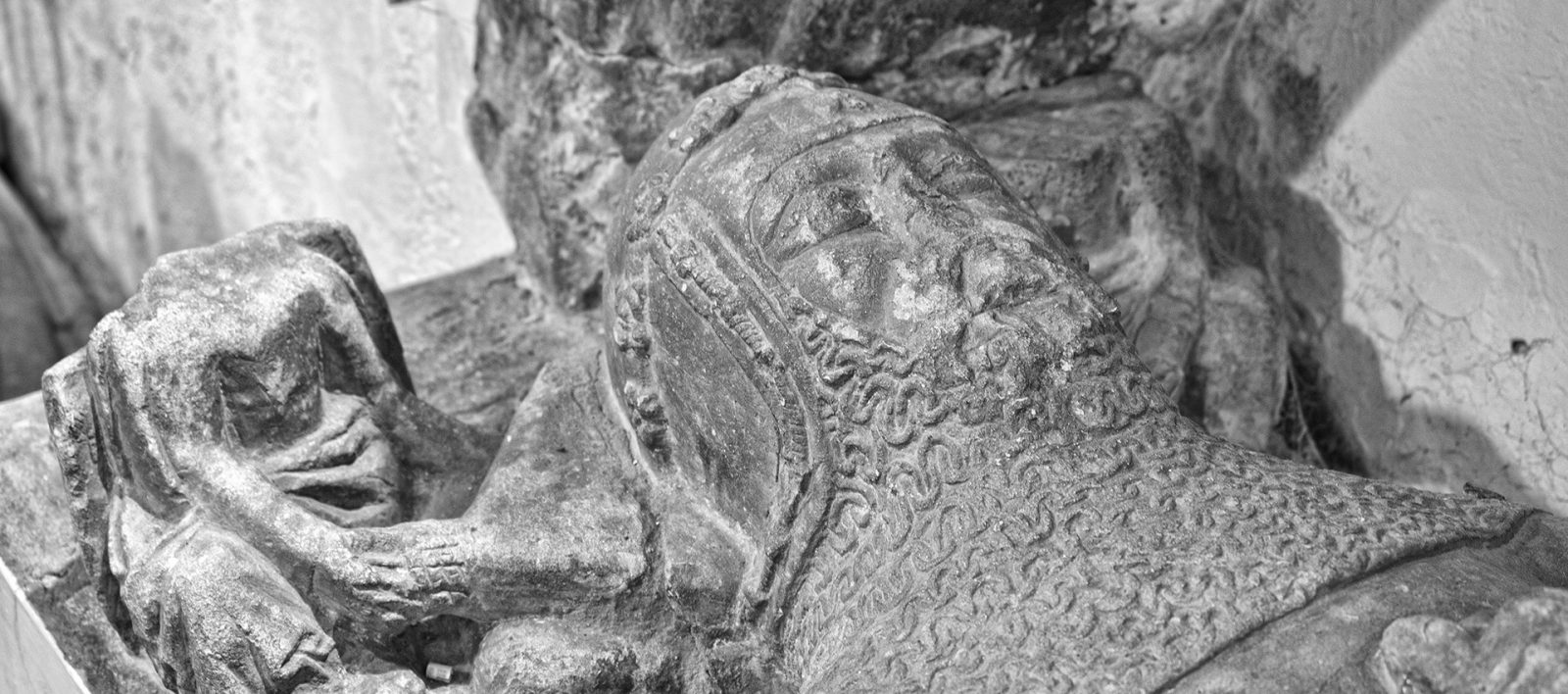
Every Window Tells A Story
All the windows, whilst only Victorian or later, are good examples.
In 1889, Miss Mary Marris, a prominent philanthropist in the town, gave three windows made by Burlison and Grylls in memory of her mother’s family, the Turners.
Burlison and Grylls were highly regarded: the Rose Window in Westminster Abbey is another example of their work.
Above the west door of the tower and visible from the nave is the “Mary Window” (also by Burlison and Grylls) of the Madonna and Child. This was financed by contributions from women named Mary who lived in the town.
Whilst this window can now be seen at close quarters from the Upper Meeting Room, this was only possible when the room was created in 1995.
Prior to that it could only be seen at a distance from the ground floor.
And yet the detail in the window is still fine – every nail and strand of hair can be seen and there are delicate flowers around the feet of Mary. Clearly this window was created for God to see and not Man!
The stained glass in the north and south windows of the sanctuary – executed by Kempe whose trademark is a small tower in the corner of their windows – are in memory of Canon and Mrs. Maclean
(Canon Maclean was vicar of Caistor from 1844-1886) .
The “ Epiphany Window “ (also by Kempe) was installed during 1910 in memory of William and Charlotte Brooks who farmed first at Fonaby and later at Hundon Manor
Also by Kempe is the window given in memory of Canon Westbrooke (who was Vicar of Caistor from 1886–1916) by his sister.
The East window (above the High Altar) is in memory of the Kenningtons. They originated in Caistor but moved to Edinburgh where Charles established a famous departmental store, “Kennington and Jenners”. Jenners is still in business to today on Princes Street, in Edinburgh,
The windows tell the story of the Christian faith in pictures.
In other windows, you will find the story of David and Goliath, St Michael slaying the dragon (Satan), the Christmas and Easter stories, Jesus healing and teaching, and his Palm Sunday entry into Jerusalem (or is it Jericho with little Zacchaeus up in the tree?) .
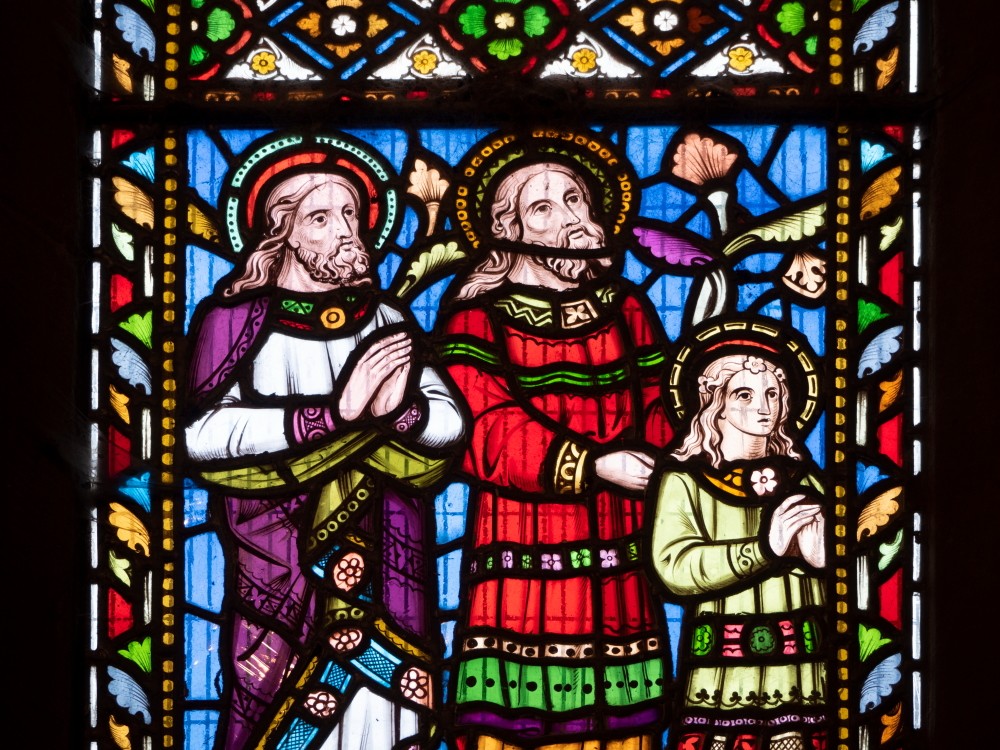
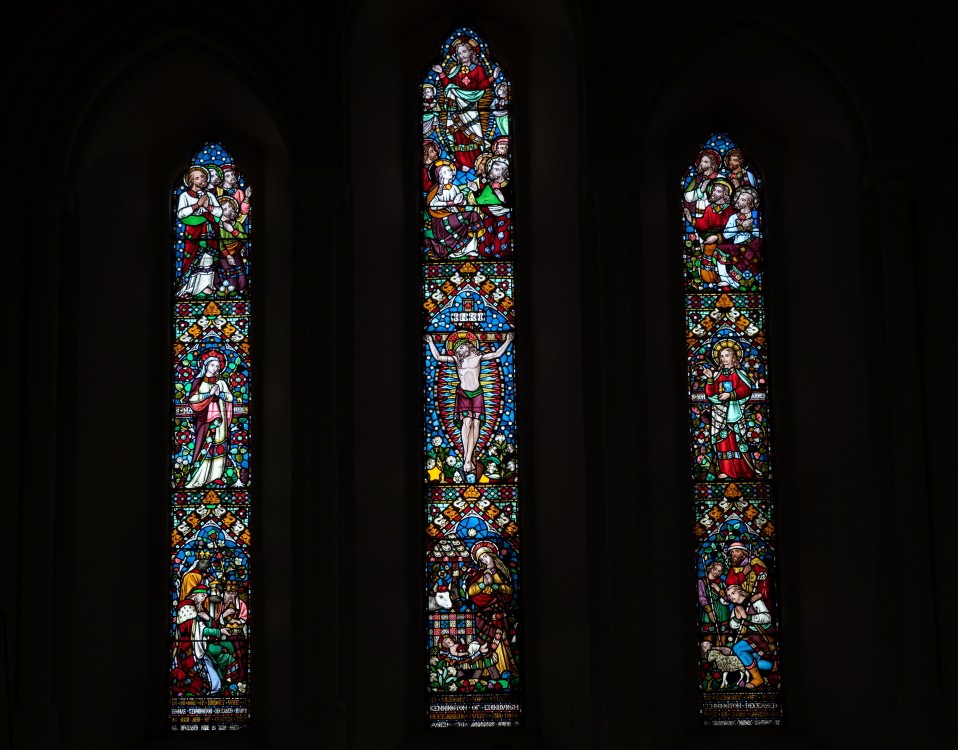
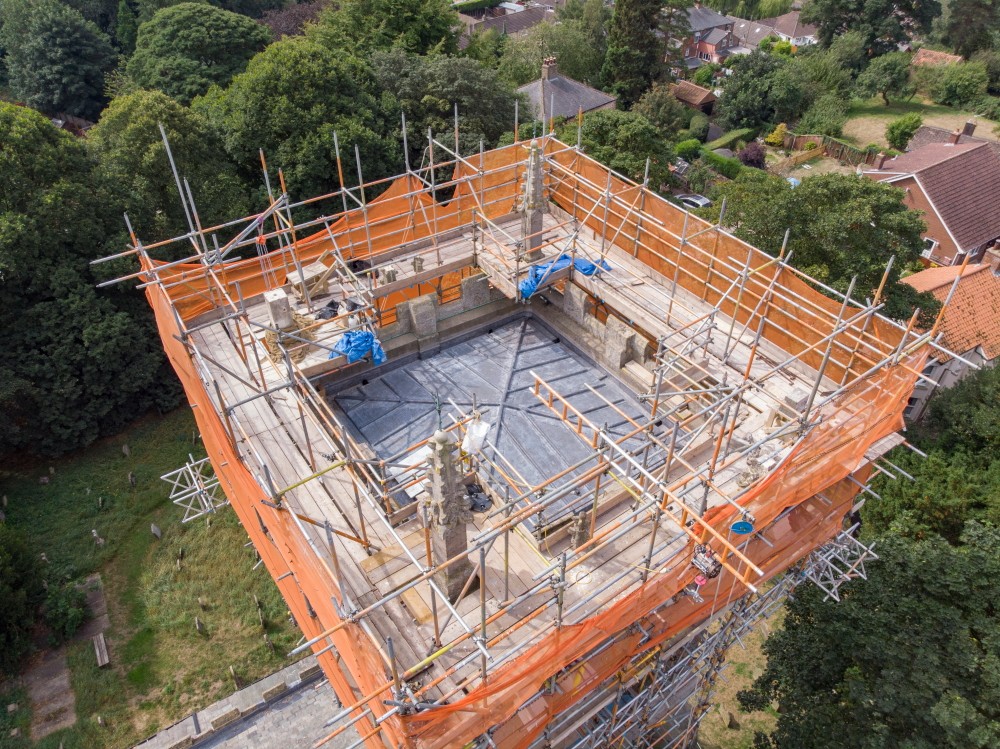
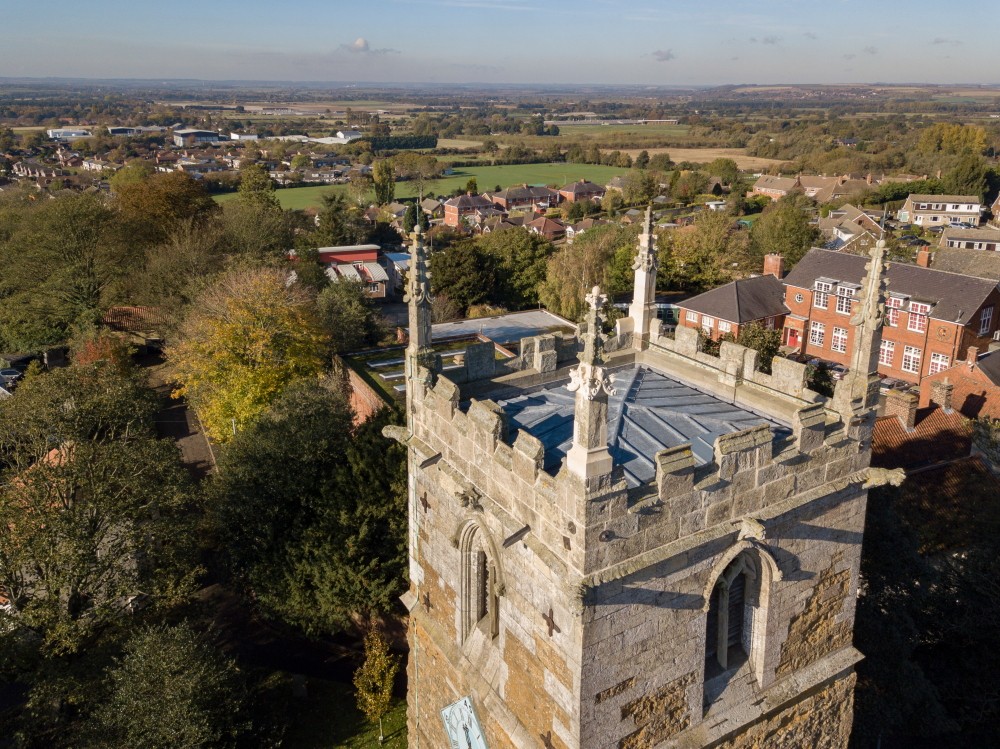
Time Will Tell & The Bells
The town clock on the tower was made in 1853 and was paid for by a subscription from the people of Caistor. It was made by A. Simmonds of Warwick who was a church clock maker of excellent repute. The clock was re-gilded in 1893 following a house to house collection. An automatic rewinding mechanism was installed in 2005 and at the same time it was stripped down and cleaned and the hands, numerals and inscriptions were re-gilded again, this time in double thickness gold leaf, and the slate clock faces were repainted!
Caistor Church is proud of its peal of 8 bells.The oldest was cast in the early 16th century and the newest in 1989!
|
Treble |
Plain Bell – Cast by Eijsbouts, Asten, Holland in 1989 |
|
2 Bell |
The Ringers Bell |
|
3 Bell |
Cast by J Taylor & Co., Founders, Loughborough in 1871. |
|
4 Bell |
Cast by James Harrison of Barton, Founder in 1833 |
|
5 Bell |
Cast by James Harrison of Barton, Founder in 1833. |
|
6 Bell |
Inscription: Memento Mori (Remember Death) T O W Church Warden W.S. |
|
7 Bell |
SANC TE PE TRE Dedicated in honour of St. Peter, one of the patron saints of the church. |
|
Tenor |
GLORIA IN EXCELSIS DEO |
The Tenor (the heaviest bell) weighs 11cwt – 3qr – 8lb (1324lb or 601kg) and the Treble, (the lightest), around 220 kg
Two bells were given to the church by Mr Martin Munday who died on 25th March 1832, aged 84 years.
The following inscription on his tomb (situated on the left, near to the main entrance to the church) records the gift with these words:-
“Such was his veneration for the Church of England he bequeathed by his will two additional bells to the belfry of this church for the use benefit and amusement of the inhabitants of the town of Caistor forever”
In 1985 Mr Edward W Colley and his son, Stephen, of Caistor took down the bells and the original wooden housing. They prepared, made and installed the existing bells plus The Ringers Bell in a metal frame with new traditional-type bell wheels, modern pulleys and ball bearings. The Treble Bell was added to the tower in 1989.
The Churchyard
Much can be learned from the churchyard. One tombstone in particular (found at the southwest corner) commemorates the remarkable achievement of the Foster family. In 1775, John Foster became the Parish Clerk.
On his death in 1825, he was succeeded by his son, Joshua until his death in 1847, whereupon he was succeeded by his son, also called Joshua and, upon his death in 1871, the post past to his son, yet another Joshua who was clerk until 1905. Thus from 1775 to 1905, the Foster family held the post of Parish Clerk of Caistor!
